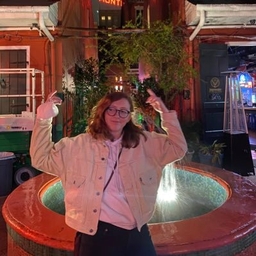
David Condos
Reporter at KUER-FM (Salt Lake City, UT)
Covering southern Utah for @KUER, NPR Utah • Past: @HPPR + @KSNewsService • National Edward R. Murrow Award recipient • Bluesky + IG: @davidcondos
Articles
-
1 week ago |
kuer.org | David Condos
Catharine DeLong still remembers how she felt after her first music vigil several years ago. “I can't believe they let me do that,” the Salt Lake City musician said. “I can't believe that they would let me come, sit next to the bedside of this vulnerable person in this moment that is so liminal and so tender.”DeLong is a harpist with a niche. She plays for people who are dying. This practice is called music thanatology — named for Thanatos, the Greek god of death.
-
2 weeks ago |
kuer.org | David Condos
It’s already shaping up to be a risky summer for wildfires in southern Utah. The area is parched after a historically dry winter. In preparation, the state hopes its expanded push to control wildfires with aircraft will help protect communities and firefighters. “It's a huge, huge investment. It was a great, big payoff,” said Kayli Guild, fire prevention coordinator with the Utah Division of Forestry, Fire and State Lands.
-
2 weeks ago |
envirolink.org | David Condos
From NPRA booming population and changing climate have strained water supplies in St. George, Utah. Local leaders are betting that recycled wastewater can keep the city’s taps flowing. (Image credit: Ryan Kellman)
-
2 weeks ago |
npr.org | David Condos
Climate change shapes where and how we live. That's why NPR is dedicating a week to stories about solutions for building and living on a hotter planet. ST. GEORGE, Utah - Water scarcity, population growth and climate change are on a collision course in the American West. That's clear in cities like St. George, a desert community surrounded by stunning red rock cliffs and mesas in Utah's southwest corner. The population is booming and climate change is making heat more intense and rain less reliable.
-
3 weeks ago |
kuer.org | David Condos
After a historically dry winter, southern Utah is counting on the summer monsoon season to deliver some much-needed rain. And the latest forecast offers a glimmer of hope. The seasonal outlook from the National Oceanic and Atmospheric Administration shows a slightly above-average chance the St. George area will get an active monsoon season that starts early, possibly before the end of June.
Journalists covering the same region

Anjeanette Damon
Investigative Reporter at ProPublica
Anjeanette Damon primarily covers news in Nevada, United States, with a focus on the Reno area and surrounding regions.
Jamie Lampros
News Reporter at Standard-Examiner
Jamie Lampros primarily covers news in the Wasatch Front region of Utah, United States, including cities like Salt Lake City and Provo.

Lexi Peery
Associate Producer at Wondery
Lexi Peery primarily covers news in Utah, United States, focusing on areas around Salt Lake City and surrounding regions.

Michael Houck
Digital Content Producer at KSL.com
Michael Houck primarily covers news in Utah, United States, including areas around Salt Lake City and surrounding regions.

Riley Carroll
Anchor/Reporter at KTXL-TV (Sacramento, CA)
Riley Carroll primarily covers news in Northern California and Colorado, including areas around Sacramento, San Francisco, and Denver.
Try JournoFinder For Free
Search and contact over 1M+ journalist profiles, browse 100M+ articles, and unlock powerful PR tools.
Start Your 7-Day Free Trial →Coverage map
X (formerly Twitter)
- Followers
- 2K
- Tweets
- 4K
- DMs Open
- Yes

RT @CourtneyLTanner: I've been pushing for records on this for six months!!! The university has denied several requests from The Tribune a…

1. More reporters should consider covering rural areas and more newsrooms should see the value in rural beats. Would benefit journalism + the public. 2. Feels weird that “reporters” can refer to both people who cover small city council meetings and people who have talent agents.

RT @natsfert: A thread worth reading:

